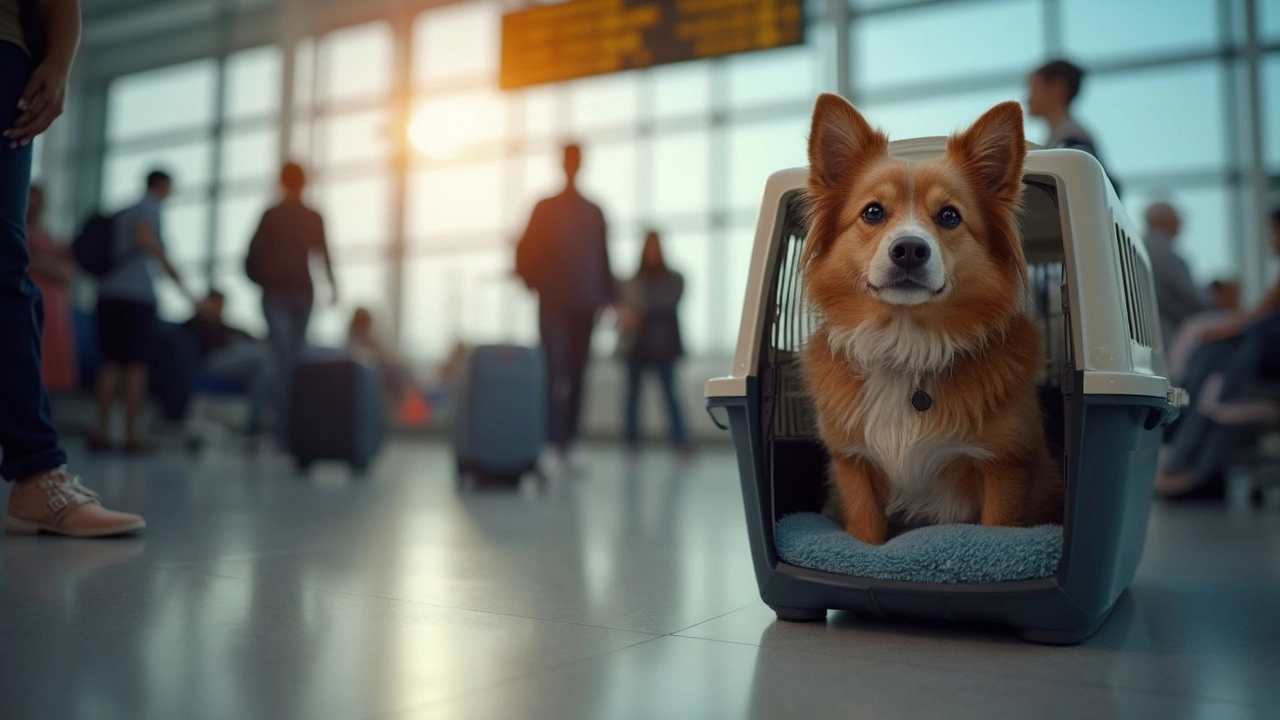Pet Air Travel: Simple Tips for Flying With Your Dog or Cat
Got a fur friend and a flight to catch? You don’t have to stress. In this guide we break down the real steps you need to get your pet on a plane safely and comfortably.
Understanding Airline Policies
Every airline has its own set of rules. Some allow small dogs and cats in the cabin for a fee, while larger dogs must travel in the cargo hold. Check the size limits, weight caps, and carrier dimensions before you book. Most UK carriers charge between £30‑£80 for a cabin pet, and up to £200 for cargo. Look for airlines that offer a temperature‑controlled hold if you’re traveling in summer or winter.
Don’t assume the policy is the same for all routes. International flights often have stricter health paperwork requirements. A quick call to the airline’s pet desk can save you a lot of back‑and‑forth later.
Preparing Your Pet for the Flight
Start the prep at least two weeks before departure. Get a hard‑sided carrier that meets IATA guidelines – the pet should be able to stand, turn around, and lie down comfortably. Line the bottom with a familiar blanket to reduce anxiety.
Visit the vet for a health certificate. Most airlines need one signed within 10 days of travel. While you’re there, ask about a mild sedative if your pet gets extremely nervous. Many vets recommend avoiding strong meds that could affect breathing.
Feed a light meal the night before and skip breakfast on the day of travel. A partially empty stomach reduces the chance of vomiting in the carrier. Offer water right up until you go through security, then give a small drink right before boarding.
Practice crate training at home. Put treats and toys inside and let your pet spend short periods inside the carrier each day. This builds a positive association and makes the airport experience less scary.
On the day of the flight, arrive at the airport early. You’ll need extra time for check‑in, security screening, and possibly a pet relief area. Keep your pet’s collar on with an ID tag that has your phone number.
If your pet is traveling in the cabin, place the carrier under the seat in front of you. Keep the temperature comfortable and avoid opening the carrier mid‑flight. A calm voice and gentle petting can help calm nerves.
For cargo travel, label the carrier with “Live Animal” stickers and include a copy of the health certificate. Ask the airline staff to confirm the carrier is placed in a temperature‑controlled section.
After landing, give your pet a chance to stretch and use the bathroom as soon as you’re in a safe area. A short walk helps reduce post‑flight stress and lets you check for any signs of injury.
Flying with a pet isn’t as daunting as it seems. Follow the airline’s rules, prep your pet early, and stay calm – your furry buddy will pick up on your vibe and settle in. Safe travels!
Posted By Bryndle Redding On 13 May 2025 Comments (0)
How Stressful Is Flying for Dogs? What Pet Owners Need to Know
Flying can be stressful for many dogs, with new sounds, people, and routines making travel tough. This article breaks down what actually happens for dogs during flights, what signs of stress you should look for, and how different factors—like cabin versus cargo travel—affect your pet. Helpful facts and tips are included to make air travel safer and more comfortable for both you and your dog. Learn which breeds may have special risks and what you can do before, during, and after the flight to support your furry friend. Planning ahead can help you decide if flying is the right choice for your pet.
READ MORE